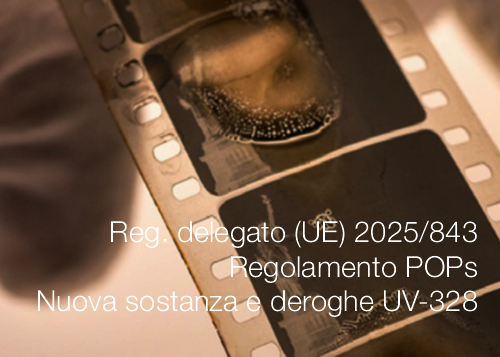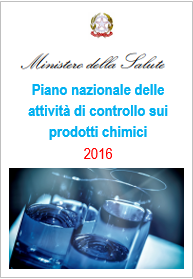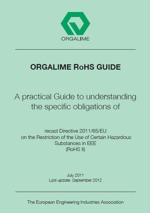Informazione tecnica HSE / 25 ° anno
/ Documenti disponibili:
45.615
/ Documenti scaricati: 34.619.928
/ Documenti scaricati: 34.619.928
An effective food safety management system (FSMS) reinforces an organization’s control on food safety hazards and ensures that its products are safe for consumption. Published jointly by ISO and UNIDO, this handbook provides a practical approach and a wide range of information to develop, document, implement and maintain a robust FSMS according to ISO 22000:2018.
The characteristic of food safety is the absence of foodborne hazards at the point of consumption. These hazards can occur at different stages of the food chain, therefore adequate controls throughout the network are essential. Food safety is ensured through the combined efforts of all the parties participating in the food chain, from feed producers and primary producers to food manufacturers, transport and storage operators and subcontractors, right through to retail and food service outlets.
These work together with related organizations such as producers of equipment, packaging materials, cleaning agents, additives and ingredients, as well as service providers.
ISO 22000:2018, Food safety management systems - Requirements for any organization in the food chain, is recognized internationally as the most relevant document supporting the development of a food safety management system (FSMS).
The International Standard defines what an organization needs to do in order to demonstrate its ability to control food safety hazards and ensure that food products are safe for consumption. This enables organizations to deliver food-related products and services with confidence throughout the supply chain. Authored by experts from SC 17, Management systems for food safety, a subcommittee of ISO’s technical committee ISO/TC 34, Food products, this standard encapsulates the latest knowledge of food chain safety to support organizations in developing an effective FSMS.
In allegato Preview riservata Abbonati ISO 22000:2018 | Food safety management a practical guide
_______
Contents
Chapter 1
Topic 1: High Level Structure (HLS)
Topic 2: Process approach
Topic 3: The two PDCA cycles of ISO 22000:2018
Topic 4: ‘Risk-based thinking’ in the context of ISO 22000
Chapter 2
Task 2.1 : Understanding the organization and its context
Task 2.2: Understanding the needs and expectations of interested parties
Task 2.3: Determining the scope of the FSMS
Task 2.4: FSMS (processes and interactions)
Chapter 3
Task 3.1: Draft a food safety policy, a set of objectives of the FSMS and plan to achieve them
Task 3.2: Define and communicate the roles, responsibilities and authorities
for personnel who have an impact on food safety
Task 3.3: Manage staff skills/competencies
Task 3.4: Provide resources for the FSMS (beyond personnel)
Task 3.5: Using externally developed elements for the organization’s FSMS
Task 3.6: Control the externally provided processes, products or services
Task 3.7: Establish and maintain external and internal communications
Task 3.8: Manage the documentation of the FSMS
Task 3.9: Plan what to do in case of emergency situations and potential incidents
Task 3.10: Develop, implement and test plans for the withdrawal/recall of products
Chapter 4
Task 4.1: Identify the PRPs required by the organization
Task 4.2: Review the PRPs in place in the organization (applicable to existing organizations)
Task 4.3: Implement the PRPs
Task 4.4: Monitor the PRPs, when relevant
Task 4.5: Verify that established PRPs are applied effectively
Task 4.6: Develop methods or a system for product traceability
Chapter 5
Task 5.1: Establish the food safety team
Task 5.2: Provide the information needed to conduct the hazard analysis
Task 5.3: Prepare the process flow diagram
Task 5.4: Identify the hazards associated with the food
Task 5.5: Conduct a hazard assessment
Task 5.6: List and select control measure(s) or combination(s) of control measures
Task 5.7: Categorize, manage, monitor and document the control measures
Task 5.8: Validate the control measure(s) or combination(s) of control measures
Task 5.9: Establish and apply corrections and corrective actions
Task 5.10: Control monitoring and measuring (operational processes)
Task 5.11: Conduct a verification related to the PRPs and hazard control plan
Task 5.12: Update the preliminary information
Chapter 6
Task 6.1: Conduct an internal audit of the functioning of the organization and the activities having an impact on food safety
Task 6.2: Evaluate the overall performance of the organization and decisions made to improve the FSMS: management review
Task 6.3: Improve the system
Chapter 7
APPENDIX A
APPENDIX B
ADDITIONAL RESOURCES
Fonte: ISO
_________
Autocontrollo alimentare e HACCP | Raccolta normativa 2021
Autocontrollo alimentare e HACCP | Raccolta normativa 2021
Ed. 5.0 2021
I testi consolidati proposti, strutturati da formativo nativo epub, sono ottimizzati per la navigazione e per visualizzazione in dispositivi mobile.
Download Indice Ed. 5.0 Marzo 2021
Raccolta di tutta la disciplina normativa, aggiornata al 2021, riguardante l'autocontrollo alimentare ed il sistema di controllo HACCP.
Pacchetto igiene
Con la nuova disciplina comunitaria in materia di sicurezza alimentare (I regolamenti del cosiddetto “pacchetto igiene”) in vigore dal 1°Gennaio 2006 sono state introdotte, a livello comunitario, nuove regole per la sicurezza dei prodotti alimentari ed è stato delineato un nuovo approccio metodologico basato sul rischio al sistema dei controlli ufficiali.
Il “pacchetto igiene” è definito dai Regolamenti:
- Regolamento (CE) n. 178/2002
- Regolamento (CE) n. 852/2004
- Regolamento (CE) n. 853/2004
- Regolamento (CE) n. 854/2004 abrogato dal Regolamento (UE) n. 2017/625
- Regolamento (CE) n. 882/2004 abrogato dal Regolamento (UE) n. 2017/625
- Regolamento (UE) n. 2017/625
e modifiche previste da successivi regolamenti. Questa normativa precisa e approfondisce le tematiche sulla sicurezza alimentare e le modalità di applicazione del sistema HACCP.
L’autocontrollo è obbligatorio per tutti gli operatori che a qualunque livello siano coinvolti nella filiera della produzione alimentare.
L’HACCP (Hazard analysis and critical control points) è invece un sistema che consente di applicare l’autocontrollo in maniera razionale e organizzata. È obbligatorio solo per gli Operatori dei settori post-primari.
Il sistema HACCP è quindi uno strumento teso ad aiutare gli OSA a conseguire un livello più elevato di sicurezza alimentare.
Collegati:

ID 24281 | 15.07.2025
Regolamento delegato (UE) 2025/843 della Commissione, del 5 maggio 2025, che modifi...

Anno 2016
PIANO NAZIONALE DELLE ATTIVITÀ DI CONTROLLO SULL’APPLICAZIONE DEI REGOLAMENTI (CE) N. 1907/2006 (REACH) E (CE) N. 1272/2008 (CL...

A practical Guide to understanding the specific obligations of Recast Directive 2011/65/EU on the Restriction of the Use of Certain Hazardous Substances in ...
Testata editoriale iscritta al n. 22/2024 del registro periodici della cancelleria del Tribunale di Perugia in data 19.11.2024